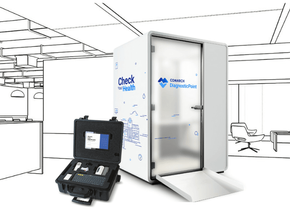Awakening insurance to the benefits of RPA

Consulting seven company executives, thought leaders and tech experts, we conduct a virtual roundtable on RPA’s place within modern insurance.
A technology that is invaluable for automating process-driven tasks, the application of robotic process automation (RPA) in insurance could be highly significant as the sector moves towards more digitally sophisticated and customer-centric operations. Capable of introducing innovation to a centuries-old industry, the adoption of RPA could ultimately alleviate human workers from the burden of repetitive administrative tasks, and enable them to focus more on qualitative work, product customisation, and overall service optimisation.
Insurance-specific processes that could benefit from RPA include:
- Underwriting
- Claims
- Analytics
- Sales and distribution
- Regulatory compliance
However, despite its potential, the industry has historically been poor at making use of and integrating new technology. This could be due to many factors, including regulatory restrictions which mean that all changes must be strictly assessed before they are implemented. Also, as with all technological innovations, RPA must be integrated intelligently with pre-existing systems that serve a quantifiable purpose. If done correctly, Capgemini surmises, the operational gains can be significant. “Unlike traditional automation, RPA has the potential to boost an insurer’s overall operational effectiveness with less investment, shorter cycle time, and higher short-term business value.”
To explore how human and artificial intelligence can be optimally combined, the insurance-specific use-cases of RPA and its wider benefits (both in the present and potentially the future), InsurTech Digital consulted a broad range of executives, technology experts and thought leaders. They were Jason Wilby, Co-Founder of Open Insurance; Chris Huff, Chief Strategy Officer of Kofax; Cathal McGloin, CEO of ServisBOT; Elaine Mannix, Global Insurance Lead of UiPath; Neil Murphy, Global VP of ABBYY; Monica Spigner, Executive VP of Business Transformation at Teleperformance; and Simon Shaw, Head of Financial Services and Insurance at Software AG.
In general, our interviewees believed that insurance’s reservations about RPA were explained by a combination of scepticism towards new technology, a traditionally conservative industry culture, and negative experiences from previous tech-based endeavours. The benefits of overcoming this bias, they claim, include cost reductions, enhanced scalability, and a significantly improved customer experience. The flexibility of RPA, which includes both front office and back office functions, can play an important role in keeping organisations lean and agile in the unpredictable post-COVID-19 landscape. Furthermore, the pandemic has left an indelible mark on the industry; the challenge of meeting difficult targets during the height of the lockdown has led to an accelerated awakening among company executives regarding the benefits of automation.
Although it would be a mistake to consider this mass re-evaluation the final step of insurance’s developmental journey, there are many reasons to anticipate that a more general acceptance of RPA and automation technology is close at hand. What follows is a selection of answers provided by our interviewees.
NOTE: All statistics provided are the commentators’ own, unless otherwise cited in-text.

InsurTech Digital: RPA and automation generally could be highly applicable to insurance. Historically, why do you think the industry has been slow to adopt new technologies?
Neil Murphy: Scepticism of RPA is a key factor in the UK, with business leaders in the insurance industry wondering if it is worth the investment (33%) and being nervous about the new technology (17%). These nerves are markedly higher than in other countries: 0% of confident French decision-makers shared the same concerns, with 0% of US decision-makers being nervous about RPA. This chimes with the pressure faced by UK businesses when automating their most important processes. In insurance, improving customer experience is seen as the most helpful use case for RPA (52%), but is also proving the most challenging to automate (41%). The majority (52%) see it as the most pressing.
Jason Wilby: For many years, insurance firms have taken a conservative approach to technology. Large and safe organisations by nature, they haven’t had the ingredients to be innovation-ready and it’s been this level of caution that’s stunted the attitude to innovate. However, we’re starting to see signs of change; we’re at the beginning of a new age for the insurance industry.
Chris Huff: Automation is extremely applicable to the insurance industry, yet the industry involves a lot of data flowing in and out of various, rarely connected systems. People sit in the middle catching data, only to turn around and input it into another system. Very inefficient! Give a citizen developer the right integrated automation platform and they could design an RPA robot with Capture and Workflow in less than a day. Most industries innovate and invest when necessary, but, otherwise, they sit on legacy estate tools and processes as long as practically possible. However, this is without realising the opportunities for better products and services lost through lack of innovation. This generally comes down to a company’s culture: if we look at the heads of many of these long-standing institutions, they often lack the vibrancy and energy needed to innovate with advanced technologies.
Cathal McGloin: A recent Information Services Group (ISG) survey [read BizClik Media’s profile of ISG here] found that large insurers have focused on cost reduction rather than winning more customers. The ability to scale to serve more customers more cost-effectively is a critical factor for sustaining profitability in the sector, and this is where automation comes into its own. This is set to change, with 61.5% of insurance firms telling ISG that they plan to invest in digital customer experience and 46.2% planning to increase investment in data, machine learning and AI.
InsurTech Digital: How would you summarise the key operational benefits of RPA within insurance?
Cathal McGloin: RPA can reduce cost and improve scalability. It can also increase revenues and customer satisfaction scores by automating and personalising repetitive processes and providing paths to self-service, which ultimately minimises the manual steps that are handled by humans. Tasks such as document upload and validation are repetitive steps which can be automated in favour of focusing on higher-value tasks. Going back to the ISG survey findings, this type of automation allows insurers to add more customers and serve them at scale, rather than continually cutting costs, which is not sustainable in the longer term.
Jason Wilby: The key benefit we see is a significantly improved customer experience. RPA technology lends itself to faster, more accurate decision-making that’s running 24/7, and enables greater accessibility through a few clicks.
Monica Spigner: By harnessing the efficiency granted by RPA, insurers can streamline manual processes and experience a 40% reduction in the cost of fault case management. From the back to the front office, insurers are witnessing a domino effect from the positive changes being made throughout their business operations, resulting in agents and advisors having more time available to focus on more complex cases.
Chris Huff: Insurance companies need to rethink how and where they deploy human resources. Cross-functional teams, where technology and operations work together to understand and deliver customer preferences and expectations, should be considered. The outcome for those that make this shift could be a noticeable uptick in business agility, thereby allowing them to improve speed-to-market and reallocate operational savings to investment areas that reduce costs and improve profitability.
Neil Murphy: Today’s insurance customers are more tech-savvy, demanding personalised services and answers delivered in real-time. Automation solutions can remove friction from the customer experience by automating repetitive routine tasks for staff, protect document integrity, and accelerate the process with less human intervention. RPA alone cannot address the insurance’s challenges without the industry itself having a strong grasp on the processes themselves. But, once businesses have their processes in order, they can amplify the power of automation, increase efficiencies and boost ROI (return on investment).
InsurTech Digital: What are some specific use-cases for RPA’s deployment in insurance?
Simon Shaw: RPA use-cases broadly fall into two categories: finding things or executing things. Operational efficiency is at the front of people’s minds right now, which makes these use-cases particularly relevant. Gone are the days when teams of people could sit down to identify process improvements or new operating models; it takes too long. RPA removes the need to constantly be ‘on the lookout’ for improvements. Proactive process discovery can be an ‘always-on’ function. So, for example, a claims manager can be notified if an anomalous number of claims have been made, or that payment cycles are taking longer than they should. Those same teams are now able to make decisions instead of spending all their time searching for information.
Monica Spigner: To adapt to today’s ever-changing market conditions, Teleperformance is actively re-engineering insurance processes through automation. The company leverages a suite of intelligent solutions throughout the credit risk lifecycle, to assist insurers and enable their employees to perform tasks in a quicker, smarter, and more accurate manner. By streamlining the intake of claims, automating the underwriting process and monitoring fraudulent activity, Teleperformance simplifies, standardises, and automates business processes to identify potential issues for customers before they can even take place. In the midst of the pandemic, the Group is also prioritising the automation of claims management applications to help insurers process claims in seconds instead of hours.
Elaine Mannix: Historically, UiPath’s insurance customers tackled back-office processes such as claims and finance and accounting on an ad-hoc, tactical basis. Recently, however, there has been a shift to a more strategic view in which insurance firms are beginning to see hyper-automation as a ‘must-have’ capability for transformation. There is a growing trend to augment roles by creating digital assistants with RPA. Firms are investing in attended robots to do a lot of the heavy lifting for underwriters, claims officers and actuaries. As a result, they are freeing up 5%+ capacity within these roles. For example, one large European insurance group utilises its UiPath robotic workforce to streamline operations and deliver more value-added services. They chose to automate a process that required employees to talk to brokers on the phone to locate particular transactions. This used to take five minutes, but, working with RPA, the same transaction can be finished in 20 seconds.
Neil Murphy: ABBYY’s solutions have been used by leading German insurance broker Ecclesia Group to significantly reduce time spent on claims processing, enabling them to focus on optimising customer service. Claims operations require staff to spend extensive periods of time collecting, reviewing, scanning and distributing both paper and digital claims documents, making it difficult to keep up with customer expectations. This time could’ve been spent on more high-value responsibilities, such as settling claims for customers quicker. By utilising ABBYY’s digital intelligence solutions, Ecclesia was able to streamline the claims process by enhancing the accuracy of document processing and delivering faster processing times. This meant insurance staff could spend less time on paperwork and more time working closely with the business and its customers.
InsurTech Digital: In your opinion, has COVID-19 accelerated interest in automation?
Simon Shaw: At a time when we’re all conducting many aspects of our personal lives online, the absence of digital insurance services negatively impacts the customer experience. Insurance leaders are aware of this, with research revealing that over 80% believe digital disruption will transform their customer interactions. For example, Lloyds of London closed its underwriting room in March for the first time in its 330-year history as a result of the pandemic. It is reopening, but with capacity reduced to 45% in order to adhere to social distancing. RPA and other automation tools will help to facilitate the return to ‘normal’, ensuring processes run as smoothly as possible.
Elaine Mannix: COVID-19 has put a lot of strain on the insurance industry and UiPath has seen an acceleration in the adoption of RPA as a result. For those that already had this capability, they used it to support the virtual mobilisation of their workforce. Others used their software robots to handle the increase in customer demand on various channels from emails, contact centres or chatbots. This success has grabbed the attention of C-suite executives who were caught out with less than resilient business continuity plans. Their eyes have opened to how quick and easy these deployments can be, and many are now exploring it for the future.
Cathal McGloin: At the start of lockdown, travel and insurance companies saw a four-fold increase in incoming customer calls, as people desperately sought advice on whether they were covered for lost holidays and cancelled events. At the same time, customer service agents were adjusting to working from home and struggling to meet demand. This created an urgent requirement for companies to explore new ways to handle sudden spikes in call volumes that threaten to overwhelm staff. Those organisations that had already started using conversational AI and RPA were able to rapidly set up automated workflows to deflect calls from the IVR (interactive voice response). These automated systems provided customers with timely resolutions to their queries, while simultaneously easing pressure on call centres.
Neil Murphy: While it’s true that the pandemic has accelerated the plans for many companies to reduce their reliance on sub-optimal processes and manual tasks, just investing in RPA is not the end of a business’ automation story. Right now, many business leaders still don’t know much about the AI behind the human and its potential to transform their business. This needs to change.
Chris Huff: Without a doubt, COVID-19 has accelerated a ‘digital awakening’ among boards and C-suites. The days where point solutions like RPA were given months and years to scale are over. Boards are demanding a holistic digital transformation strategy that uses integrated automation platforms with robust ecosystems to drive efficiency gains and delight their customers. Given all the disparate data, systems, and the new dislocated workforce, digital workflows serve as the connective tissue and new digital frontier for businesses seeking a competitive edge.






